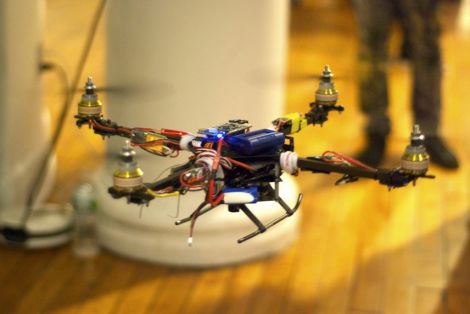
Sit down for a moment commenters, we need to talk.
Yes, you all knew this post was coming one day. We’ve talked about this topic at length internally, and we have decided that we’re going to clean up our act. For some time, Hack a Day has been growing a reputation as the prime source of extremely negative, vulgar, rude, sexist, and inflammatory comments in the hacking community. We’ve had complaints from readers (yes there are readers that aren’t commenters, thousands of them) and fellow members of the hacking community about this problem for a long time. [Eliot] even mentioned it back in 2009 when a job applicant expressed concern. We’ve nicely tried to steer things to the positive in a variety of ways, from suggesting commenters to be more supportive, jokingly making a troll detector, and simply stating that the comments need to stay “on topic and nice”.
When we see things like these tweets by [Jeri Ellsworth], we hang our heads in shame.

She’s not the only one. We actually get this quite regularly. As our readership grows, we see it more and more often. We get emails explaining that people have done a hack but don’t really want to post it because the commenters will just tear it apart in an unnecessarily aggressive and negative way. We have actually had people ask us to remove their projects and comments due to uncivil behavior. Constructive criticism is good, but insulting and angry deconstruction isn’t helpful to anyone.
We’re better than that aren’t we? We are fast, agile and fairly unrestricted in our content. We should be at the center of this community, not on the outer edges, reviled by many for the behavior of a few. Hackaday should be the teacher at the front of the classroom, not the kid in the back throwing wadded up paper at the kids in the front.
What we’re doing:
First off, as far as we can foresee, we will never close the comments section of our web site down. Hackaday should be a home for the entire hacking community and as such, you will always be able to settle in and have a reasonable discussion. We do not want to implement any sort of G+ integration or similar, nor do we want to require registration to leave a comment. We will if we absolutely have to, but lets try to avoid that.
Comment sections and forums have often been a place where negative comments can get out of hand. There are many theories for why this happens, but the result is usually the same: rules and moderation. Many sites have already laid down the law and are adhering to their goals of keeping things civil. We realize that we are to blame if our image is this poor, so we are doing something about it.
From this point moving forward, Hackaday comments will be civil. If you are posting an empty in-joke (“where’s the Arduino?”), a declaration of “not a hack”, a racist, sexist, completely off topic, platform-hating, or personally insulting comment, your post will be deleted. This will be at the discretion of whichever Hackaday staff member happens to see your comment first.
Can you criticize Hackaday?
You can’t walk into a business and start screaming about how much they suck without being escorted out immediately. Same thing applies here.
We are always hard at work trying to find interesting hacks, makes, repairs, tweaks, videos, etc. that appeal to a wide spectrum of readers. We put this web site together for you, as well as 200,000 other individuals. Not everything will appeal to everybody. That would be impossible. However, if you don’t like a post or project, just skip it – we’ll have another one ready in short order. We will feature projects that appeal to the seasoned EE as well as the complete beginner. We were all beginners at one time, and it would have been great to have something like Hack a Day around back then to show us hacks ranging from simple to advanced.
From time to time however, Hack a Day can be a less than desirable place to hang out, especially for those who are coming here for the first time. We don’t want to chase off young, creative minds. As a community, we should be helping those that are just starting to venture into hacking electronics.
If you have a problem, email us. You’ll probably actually get a response that way too. My email is Caleb@ and you’re always welcome to email me personally. Again, please be civil (yep, I’ve had my share of death threats).
Grammar/spelling corrections and dead links:
No need to comment, just email us. A message to team@ will suffice, but you will probably get a quicker response by emailing the author directly. We know we have issues – we’re often so excited about a hack that some little goof slips by. Email us and we’ll fix it. Don’t write a 3 paragraph comment about how important the oxford comma is, or how we’re obviously incapable of functioning because we accidentally flubbed a word. We promise we will never intentionally screw up some grammar, spelling, or punctuation.
What you can will do to help:
Be constructive.
Every project here probably has an area that could be improved, or a part that was done inefficiently. Support your fellow hackers by offering your expertise. Explain why something isn’t working, or how you would improve it. Don’t slam them for their shortcomings. Also keep in mind that different people go about things different ways. Poster X didn’t build something the way you did? Offer an alternative without being insulting. If someone chooses to use their brand new Core i7 monster system to drive a few LEDs, that’s their prerogative. Inside, we all know that it is not the most efficient use of money or technology, there’s no reason to beat that dead horse in public.
You know what else encourages hackers to do more projects? A pat on the back. I talk to people all the time who say that they just don’t have any constructive criticism for the projects, so they don’t comment. Well, that and they know they’ll bring the ire of the worst commenters if they happen to ask a silly question. Drop in and say what you like about a project. Those positive posts might just be enough to encourage that hacker to take it a step further. How many projects have you seen dropped simply because people thought there wasn’t any interest? Tons. If you like a project, let them know.
To encourage this, the writers are going to be keeping an eye on the comments. Randomly, when we see someone being exceptionally helpful, we’ll contact them and send them a prize. This will most likely be in the form of a hackaday sticker, but we’ll see if we can’t find some other fun things as well.
Help us make Hack a Day great. Please.
[Update: we’re working on a comment flagging system currently]
[Update: threading and comment reporting have been added]















